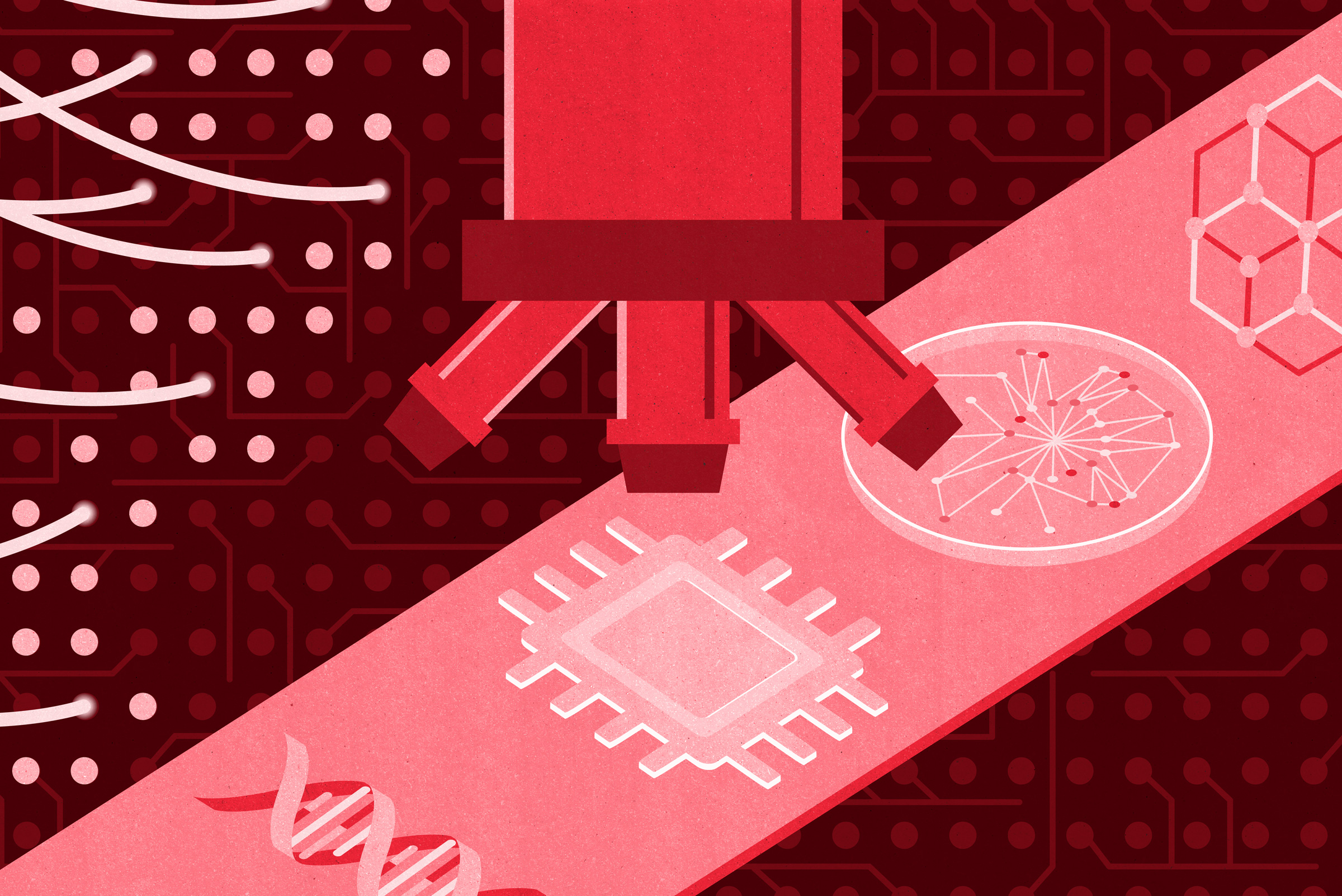Executive Summary
On April 15, 2019, CIFAR convened a roundtable to discuss the technological advances, both existing and required, to generate a dynamic molecular map of the cell. Such a map has the potential to inform our fundamental understanding of pathological processes, and to guide diagnostic development and drug discovery. By drawing on expertise from across the fields of mass spectrometry, structural analysis, cell imaging and computational biology, including Fellows from CIFAR’s program in Molecular Architecture of Life as well as leaders from pharmaceutical companies and scientific instrument manufacturers, this roundtable aimed to inform technological requirements and drive the creation of this molecular map.
Discussions at the roundtable revolved around how recent developments in various analytic techniques contribute to a better understanding of the spatiotemporal organization of cells, cellular components, and biological pathways. Speakers also discussed the development of artificial intelligence algorithms to analyze and integrate the large amount of data being generated by these techniques. This meeting will pave the way towards further conversations between researchers, instrument manufacturers and drug developers, facilitating collaborations that can result in improved research tools, drugs and diagnostics.
Impacted Stakeholders
- Pharmaceutical companies
- Diagnostics companies
- Manufacturers of scientific instruments
- Developers of artificial intelligence applications
- Medical professionals and regulators
Key Insights
- Improved mass spectrometry methods are producing higher-resolution proteomic and metabolomic signatures of various cells or tissues, which can guide the development of targeted drugs and diagnostic tests. These techniques are also producing more detailed maps of protein-protein interactions, which inform our understanding of biological pathways and disease mechanisms.
- Advances in microscopy and cell imaging techniques, such as bioluminescence resonance energy transfer and low-light imaging, is allowing for real-time observation of cellular processes and signalling pathways in live cells.
- An integrative approach to structural biology, using complementary methods such as NMR, cryo-electron microscopy and double electron-electron resonance spectroscopy, can produce a more comprehensive understanding of molecular structures, for example by capturing multiple conformations of a protein complex or the intermediate states during ligand binding.
- As analytic methods produce higher-resolution images and molecular profiles, more and more data is generated. Better computational tools can facilitate data analysis to tease out biologically meaningful information.
- The improving resolution of mass spectrometry makes it possible to more precisely, and at earlier timepoints, target diseased cells or tissues for removal. Continuing research and development will be needed to make sure these are good enough to guide automated diagnosis or surgery.
Priorities and Next Steps
- Drug companies can make use of improved molecular structures to inform drug development activities, in terms of target selection and the generation of pharmaceuticals that bind targets with higher affinity or specificity.
- Diagnostics developers can use the increasingly better proteomic and metabolomic profiles of different healthy and diseased tissues to design more sensitive and targeted diagnostic tests.
- Researchers and instrument makers should seize opportunities to collaborate on creating improved tools, e.g., with increased resolution, decreased amount of materials needed, and sped-up or automated workflow.
- In addition to proteomes and metabolomes, improved understanding of cellular transcriptomes will contribute to the development of a cellular map, ultimately informing drug discovery.
Roundtable Participants
- James (Alex) Apffel, Agilent Technologies
- Nadine Beauger, L’Institut de Recherche en Immunologie et en Cancérologie – Commercialisation de la Recherche (IRICoR)
- Michel Bouvier, Université de Montréal / CIFAR
- Karen Colwill, Network Biology Collaborative Centre, Lunenfeld-Tanenbaum Research Institute
- Jean-François Côté, Institut de recherches cliniques de Montréal (IRCM)
- Oliver Ernst, University of Toronto / CIFAR
- Adam Hendricks, AstraZeneca
- Diana Iglesias, Génome Québec
- Qin Ji, Bristol-Myers Squibb
- Thomas Kelly, Steam Instruments, Inc.
- Erika-Esther Luamba, Ministère de l’économie et de l’innovation, Government of Québec
- Stephen MacKinnon, Cyclica
- Stephen Martin, Waters Corporation
- R. J. Dwayne Miller, Max Planck Institute for the Structure and Dynamics of Matter / CIFAR
- Daphna Mokady, Endogena Therapeutics
- Zhibin Ning, University of Ottawa
- Julian Saba, Thermo Fisher Scientific
- Alex Saint-Amant Lamy, Nüvü Caméras Inc.
- Badr Sokrat, Université de Montréal
For more information, contact Fiona Cunningham, Director, Innovation
